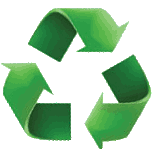How to Deal with Water Damage from Extinguishing a Fire
Fires that burn through a home are devastating events. Not only is human life put in jeopardy but valuable property undergoes utter destruction. SootSoot is fine black particles composed of carbon and other ma... More and extinguisher chemicals cover the items inside the home with layers of toxic materials that require complete removal in order to inhabit the home safely. Homeowners will pay between $1000 and $3900 to clean up a home that has been ravaged by fires, the subsequent extinguishers and the resulting water damage.
While battling a fire is necessary, the water damage that results will be an additional financial burden on homeowners. Water from hoses that put out the fire destroy the property’s walls, damage belongings inside and inundate carpets. MoldMold is a type of fungus that grows in damp or humid conditi... More growth may result, leading to even greater problems both structurally and financially. MoldMold is a type of fungus that grows in damp or humid conditi... More sporesSpores are microscopic reproductive units of fungi or mold t... More can flourish in damp conditions in less than 24 hours, eating away at the wood, drywall and floorboards and causing weakened building structures.
Sprinkling systems within a home reduce damage by up to 90 percent (since sprinklers immediately spray water on an emerging fire) in contrast with water hoses that are used to squash a raging fire. In any case, when a fire has been put out by water, homeowners should take the appropriate steps to handle the situation:
Ensure Safety
Prior to re-entering the home, get authorization from the fire officials that walking into the residence is safe. Examine destruction to the roof, walls, ceilings, stairs and flooring before you step foot inside the home. Water damage can be inconspicuous and not as obvious as fire damage. Electrical wire damage can also make the home unsafe to return to.
Contact the Insurance

Homeowners will pay between $1000 and $3900 to clean up a home that has been ravaged by fires, the subsequent extinguishers and the resulting water damage.
Once the home is safe to re-enter, calling the homeowner’s insuranceHomeowner’s insurance is a policy that provides financial ... More agent should be a priority. The damage should be communicated to the agent, who may advise a visitation by an adjuster before repairs begin. Ideally, homeowners will understand what is and is not covered by the insurance policy. The agent may require a licensed professional to handle repairs. Get a clear grasp on how much can be spent and what the policy limits are.
The fire damaged home will likely be unlivable for a short period. In such a case, homeowners should inquire about what living expenses, such as a hotel and meals, the insurance will cover during the interim period.
Document the Ruin
Prove the damage caused by extinguishing the fire with ample photographs, videos and any additional documentation. Take notes and create a list of property items destroyed by the fire and water. Walls damaged by the forceful streams of water from a hose and moldMold is a type of fungus that grows in damp or humid conditi... More growth that occurred immediately after exposure to the water are examples of the damage to be included in the documentation process.
The homeowner’s insuranceHomeowner’s insurance is a policy that provides financial ... More will require sufficient proof of the damage caused by both the fire and the resulting means of putting it out. The insurance claim process will also be sped up with full details of losses incurred as a result of the outbreak of fire and extinguishment by water.
Consult a Professional
After making an insurance claim for the water and fire damages sustained to the property, contact a licensed water damage cleanup and restoration professional. Ensure that payment goes through the appropriate insurance channels. The professional water damage restoration company will work with the homeowner’s insuranceHomeowner’s insurance is a policy that provides financial ... More to manage the claim.
Immediate contact with a water damage restoration expert is critical, since water damage is known to spread quickly, destroying other parts of the home. An infestation of moldMold is a type of fungus that grows in damp or humid conditi... More growth is also a likelihood, especially along drenched carpets and floors; consequently, contacting a water damage professional becomes an urgent matter. Water damage technicians are experienced in thoroughly eradicating moldMold is a type of fungus that grows in damp or humid conditi... More colonies.
A professional water damage restorationWater damage restoration is the professional process of clea... More company will assess the extent of damage, be able to categorize and class the devastation and recommend the optimal solutionA solution is a homogeneous mixture of two or more substance... More.
Air Out the Home
In between the initial contact with the restorationRestoration is the process of returning a property to its pr... More company and the team’s arrival, the homeowner should take steps to dry out the property. Circulate air by opening windows and doors if the weather allows. Also prop open drawers, closet doors and cabinet doors to air out the vicinity. Sump pumps can be utilized to pump out excess water, as well.
Floor rugs that have been soaked should be removed to prevent further water damage to the flooring. Furniture legs should be given foil treatment to prevent water from seeping upwards and causing additional damage.
Water damage restorationWater damage restoration is the professional process of clea... More professionals> emphasize that certain activities should never be conducted in the aftermath of water damage. For example, wet appliances should not be utilized. Homeowners must never use a vacuum to draw out excess water. Property owners should also take precautions to not enter a room that has undergone structural damage.
When an unexpected fire unleashes and streams of water are used to extinguish the flames, the homeowner is left with a watery and potentially unsafe mess to clean up. Contact the most trusted name in water damage restoration and flood cleanup, RestorationMaster.
Water damage spreads quickly and is considered an emergency situation. The dependable specialists at RestorationMaster will arrive onsite within one to two hours of the homeowner’s initial call. Technicians conduct an immediate assessment and develop a plan to remediate the water damage using techniques appropriate to each individual scenario.
The team uses advanced water extraction equipment, including powerful dehumidifiers and air movers to rid the premises of excess moisture. Every stage of the water mitigation process is monitored by a skilled technician. Once the property and the goods inside are dried, the furnishings and structureStructure refers to the framework or components of a buildin... More receive a thorough sanitization and cleaning. All structures and belongings are then reinstalled.
RestorationMaster recognizes water damage cleanup as an emergency situation. The team is available 24 hours a day and responds swiftly to disasters. The professionals at RestorationMaster serve the commercial properties and residential communities of Staten Island, NY.












